Transform Your Home with DIY Industrial Decor Ideas
Are you tired of the same old decor style that seems to blend into the background? Do you crave a look that is both bold and unique? If so, then it’s time to explore the world of DIY industrial decor! This style is not just a trend; it’s a lifestyle choice that embraces the beauty of raw materials and a minimalist aesthetic. Imagine walking into your home and being greeted by a space that exudes character and creativity. With a few simple projects, you can transform your living environment into an industrial haven that showcases your personality and taste.
Industrial decor is all about taking elements that are typically found in warehouses and factories and incorporating them into your home. Think of exposed brick walls, metal fixtures, and reclaimed wood. These elements create a rugged charm that can make any space feel inviting and stylish. The beauty of this decor style is that it allows you to be resourceful and creative. You don’t need to spend a fortune on high-end furniture; instead, you can harness your inner DIY enthusiast to create stunning pieces that reflect your style.
In this guide, we’ll dive deep into the essentials of industrial decor, from understanding its origins to sourcing materials and executing DIY projects. You’ll discover how to choose the right wood, incorporate metal accents, and even style your finished projects to perfection. So, roll up your sleeves, grab your tools, and let’s get started on this exciting journey to transform your home!
Industrial decor has its roots in the early 20th century when factories and warehouses were repurposed into living spaces. This style embraces the raw and unfinished look, celebrating the beauty in imperfection. Key features of industrial decor include the use of exposed pipes, concrete floors, and a neutral color palette with occasional pops of color. It’s a style that encourages creativity and resourcefulness, allowing you to mix and match different materials and textures.
One of the most appealing aspects of industrial decor is its versatility. Whether you live in a spacious loft or a cozy apartment, you can easily adapt this style to fit your space. The minimalist approach helps in decluttering your home while still making a strong design statement. So, if you’re ready to elevate your home’s aesthetic, keep reading to discover essential materials and inspiring DIY projects!
When it comes to creating your own industrial decor, having the right materials is crucial. Here are some must-have materials that will help you achieve that authentic industrial look:
- Wood: Both reclaimed and new wood can be used to create stunning pieces.
- Metal: Look for pipes, sheets, and accents that can add an industrial touch.
- Concrete: Perfect for flooring, countertops, and decorative elements.
- Glass: Use glass to soften the hard edges of metal and wood.
By combining these materials, you can create a cohesive and stylish decor that reflects your personal taste. In the following sections, we’ll delve deeper into choosing the right wood and incorporating metal elements into your projects.
Selecting the right type of wood is essential for achieving the industrial look you desire. Different woods have different characteristics that can influence the overall feel of your decor. For instance, reclaimed wood offers a sense of history and character, while new wood can provide a clean and polished look. Here are some popular wood types to consider:
| Wood Type | Characteristics | Best Use |
|---|---|---|
| Reclaimed Wood | Unique, weathered, sustainable | Furniture, wall decor |
| Pine | Lightweight, easy to work with | Shelving, accents |
| Oak | Durable, strong grain | Tables, flooring |
Choosing the right wood can set the tone for your entire project. So, take your time to explore different options and find what resonates with your vision!
Using reclaimed wood in your projects not only adds character but also supports sustainability. This wood often comes from old barns, factories, and other structures, giving it a unique history. Plus, it’s an eco-friendly choice that reduces waste. When sourcing reclaimed wood, consider visiting local salvage yards or searching online marketplaces. You’ll be amazed at the treasures you can find!
Once you’ve selected your wood, the finishing process is crucial. Different techniques can enhance the wood's natural beauty and protect it from wear and tear. For a rustic look, consider using a simple oil finish or a stain that highlights the grain. If you prefer a more polished appearance, a polyurethane finish can add shine and durability. Experiment with various methods to find the perfect finish for your projects!
Metal accents are a hallmark of industrial decor, and they can be used in various ways to enhance your DIY projects. From metal brackets and pipes to light fixtures and furniture legs, incorporating metal can add a striking contrast to the warmth of wood. Consider using black or galvanized steel for a classic industrial look, or mix metals for a more eclectic vibe.
Remember, the key to successful industrial decor is balance. By thoughtfully combining wood and metal, you can create a cohesive and visually appealing space that feels both modern and timeless.
Ready to get your hands dirty? In the next sections, we’ll explore some exciting DIY industrial decor projects that you can tackle at home. Each project will include step-by-step instructions and a list of materials needed to help you create stunning pieces that will elevate your space.
Building your own industrial shelving unit is a fantastic way to add both storage and style to your home. This project is perfect for showcasing your favorite books, plants, or decorative items. Stay tuned for a detailed guide on how to create a sturdy and attractive shelf that fits your space perfectly!
Lighting is essential in industrial decor, and crafting unique fixtures can serve as focal points in your home. Whether you choose to create pendant lights from pipes or a chandelier from reclaimed wood, the possibilities are endless. Get ready to learn how to illuminate your space in style!
Once you’ve completed your projects, styling your space is key to achieving that balanced industrial look. Consider incorporating soft textiles, plants, and personal touches to soften the hard edges of metal and wood. Remember, the goal is to create a warm and inviting atmosphere that feels like home.
Q: What is industrial decor?
A: Industrial decor is a design style that incorporates raw materials like wood and metal, often inspired by factories and warehouses.
Q: Can I achieve an industrial look on a budget?
A: Absolutely! Using reclaimed materials and DIY projects can help you create an industrial aesthetic without breaking the bank.
Q: What are some common materials used in industrial decor?
A: Common materials include reclaimed wood, metal accents, concrete, and glass.
Q: How can I style my industrial space?
A: Incorporate soft textiles, plants, and personal decor items to balance the ruggedness of industrial elements.

Understanding Industrial Decor
Industrial decor is more than just a style; it’s a celebration of raw materials and a minimalist aesthetic that brings a unique charm to any living space. Originating from the repurposing of old factories and warehouses, this design movement has transformed into a popular choice for modern homes. Imagine walking into a space that feels both rugged and refined, where the beauty of exposed brick, steel beams, and wooden accents come together in perfect harmony. This style embraces imperfections, making each piece tell a story of its own.
At its core, industrial decor is characterized by a few key features that set it apart from other design styles. These include:
- Raw Materials: The use of unfinished wood, metal, concrete, and glass is essential.
- Neutral Color Palette: Shades of gray, black, and white dominate, often accented with earthy tones.
- Open Spaces: Industrial design favors open floor plans that enhance natural light and create a sense of spaciousness.
- Functional Design: Every piece serves a purpose, emphasizing utility without sacrificing style.
Incorporating industrial decor into your home can dramatically enhance your living space. It creates an atmosphere that is both inviting and edgy, appealing to those who appreciate the beauty of the unconventional. Think of it as a blank canvas, where you can mix and match different elements to create a personalized sanctuary. Whether you live in a chic loft, a cozy apartment, or a suburban home, industrial decor can adapt to fit your style and needs.
Moreover, the versatility of industrial decor allows for endless creativity. You can easily blend it with other styles, such as modern, rustic, or even bohemian, to create a unique look that reflects your personality. For instance, pairing industrial lighting fixtures with vintage furniture can create an eclectic vibe that feels both curated and lived-in. The key is to balance the hard edges of industrial materials with softer, more inviting elements.
In summary, understanding industrial decor is about appreciating its roots and recognizing the beauty in its simplicity. It invites you to embrace the raw, unpolished aspects of design while allowing you to express your individuality. So, are you ready to transform your space into an industrial masterpiece? The possibilities are endless!
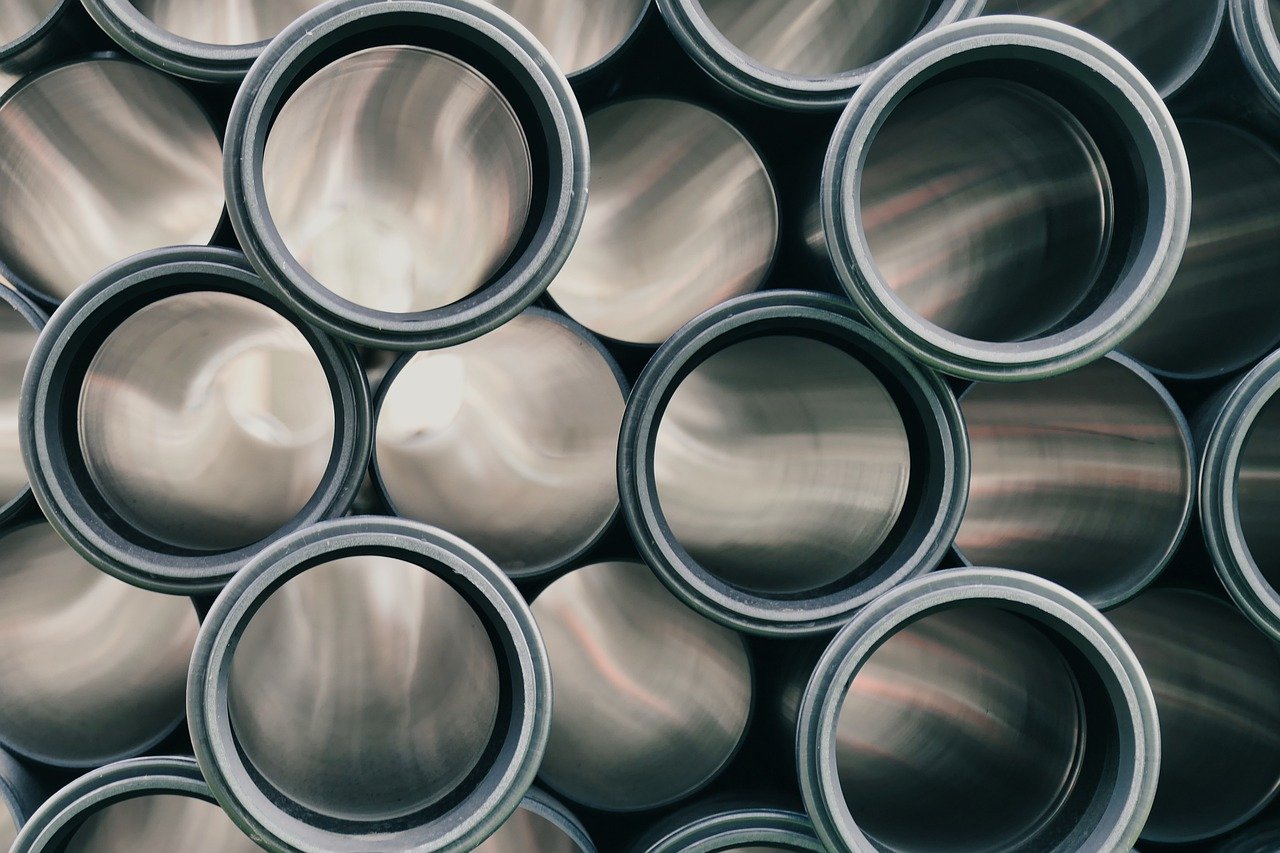
Essential Materials for DIY Projects
When diving into the world of DIY industrial decor, having the right materials is crucial to ensure your projects not only look great but also stand the test of time. The industrial style thrives on a blend of raw, unfinished materials that come together to create a cohesive and striking aesthetic. So, what are the essential materials you should have in your toolkit? Let’s break it down!
First and foremost, wood is a staple in any industrial decor project. You’ll want to choose wood that reflects the rugged and raw nature of the style. Some popular options include pine, oak, and maple. Each type of wood has its unique characteristics and can contribute differently to the overall look of your project. For instance, pine is light and easy to work with, while oak offers durability and a rich grain that adds depth.
Next up, we have metal components. Metal accents are what truly tie the industrial look together. Think pipes, brackets, and metal sheets. You can use these materials to create everything from shelving units to light fixtures. The contrast between the warmth of wood and the coolness of metal is what makes industrial decor so visually appealing. You might want to consider using black steel or brass for a more refined look, while galvanized steel offers a more rugged, weathered appearance.
In addition to wood and metal, concrete is another fantastic material that embodies the industrial style. It’s versatile and can be used for everything from countertops to planters. Plus, it’s relatively inexpensive and easy to work with, making it a favorite among DIY enthusiasts. Don’t overlook fabrics either; materials like burlap, canvas, and leather can add warmth and texture to your projects. These fabrics can be used for cushions, wall hangings, or even as accents on furniture.
| Material | Characteristics | Uses |
|---|---|---|
| Wood | Durable, warm, various grains | Shelving, furniture, decor accents |
| Metal | Strong, cool, industrial vibe | Lighting, shelving, structural elements |
| Concrete | Sturdy, versatile, raw | Countertops, planters, flooring |
| Fabrics | Textured, warm, varied | Cushions, wall hangings, upholstery |
Finally, don’t forget about finishing materials. These can include paints, stains, and sealants that will help protect your projects and enhance their aesthetic appeal. A good stain can bring out the natural beauty of wood, while a sealant will protect it from wear and tear. You might also consider using spray paint for metal elements to achieve a uniform look or to add a pop of color to your decor.
In summary, having a well-rounded selection of materials is essential for any DIY industrial decor project. By combining wood, metal, concrete, and fabrics, you can create stunning pieces that reflect your personal style while embracing the industrial aesthetic. So gather your supplies, roll up your sleeves, and let your creativity flow!
- What is industrial decor? Industrial decor is a design style that emphasizes raw materials, open spaces, and a minimalist aesthetic, often inspired by warehouses and factories.
- Can I mix different materials in industrial decor? Absolutely! Mixing wood, metal, and concrete is a hallmark of industrial design and adds depth and interest to your space.
- Is reclaimed wood necessary for industrial decor? While reclaimed wood is popular for its character and sustainability, new wood can also be used effectively to achieve an industrial look.
- How do I maintain my industrial decor? Regular cleaning and using appropriate finishes can help maintain the look and longevity of your industrial decor pieces.
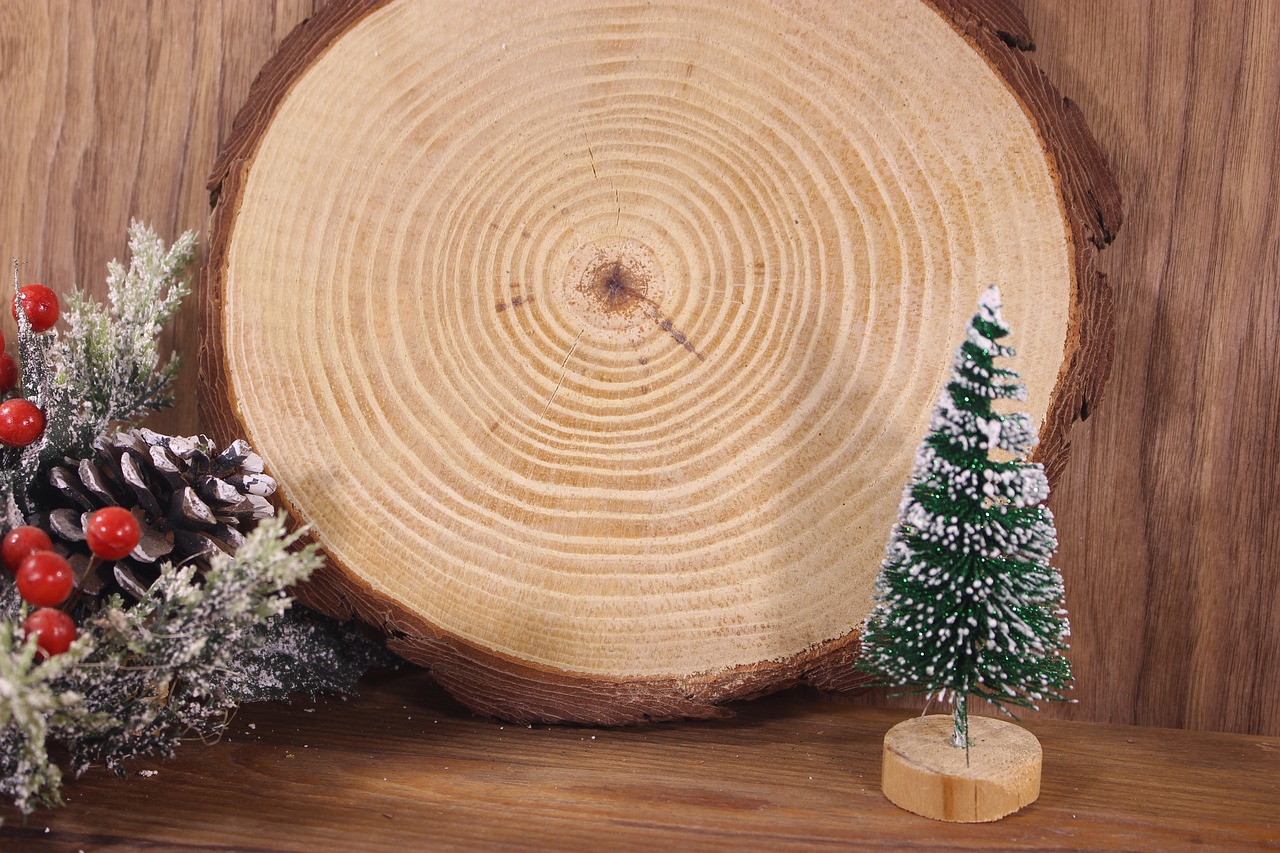
Choosing the Right Wood
When it comes to achieving that perfect industrial decor vibe, the choice of wood is crucial. You might be wondering, "What makes wood suitable for an industrial look?" Well, it’s all about texture, color, and durability. Industrial decor often embraces a raw, unfinished aesthetic, so selecting the right type of wood can dramatically enhance your space. Let’s dive into some of the most popular wood types that can elevate your industrial projects.
First up, we have pine. This wood is not only affordable but also incredibly versatile. Its light color and straight grain make it an excellent choice for a variety of projects, from shelving to furniture. Plus, it’s easy to work with, which is a huge plus for DIY enthusiasts. Another great option is oak. Known for its strength and durability, oak can withstand the test of time, making it perfect for items that will see heavy use. The rich grain patterns of oak also add a touch of elegance, blending rustic charm with industrial toughness.
If you’re looking for something with a bit more character, reclaimed wood should definitely be on your radar. Not only does it come with a unique story, but it also adds a sense of history and authenticity to your decor. Imagine using wood that’s been part of an old barn or factory! The imperfections and weathered textures can create stunning focal points in your home.
Now, let’s not forget about birch. This wood is known for its smooth finish and light color, making it a fantastic choice for furniture. It’s also quite strong, which means it can handle a bit of wear and tear. Birch can be stained easily, allowing you to customize the look to match your industrial aesthetic.
Here’s a quick comparison of these wood types:
| Wood Type | Characteristics | Best Uses |
|---|---|---|
| Pine | Affordable, versatile, light color | Shelving, furniture |
| Oak | Strong, durable, rich grain | Heavy-use furniture |
| Reclaimed Wood | Unique, weathered, historical | Focal points, accent pieces |
| Birch | Smooth finish, light color | Furniture, cabinetry |
When selecting wood, consider the final look you want to achieve. Do you prefer a more polished finish, or are you leaning towards a rustic, raw appearance? Also, think about the sustainability of your choices. Sourcing reclaimed wood not only helps the environment but also gives your decor a unique touch that new materials simply can’t replicate.
In conclusion, choosing the right wood for your industrial decor is all about balancing aesthetics, durability, and sustainability. Whether you go for the classic charm of oak or the rustic appeal of reclaimed wood, each option offers something special that can transform your space into an industrial haven.

Reclaimed Wood Benefits
When it comes to creating a stunning industrial decor, reclaimed wood stands out as a top choice for many DIY enthusiasts. Not only does it bring a unique charm to your space, but it also offers a plethora of benefits that make it an attractive option. First and foremost, reclaimed wood is a sustainable material. By repurposing wood from old barns, factories, or even furniture, you're actively participating in reducing waste and conserving natural resources. This eco-friendly aspect is not just a trend; it’s a lifestyle choice that resonates with many homeowners today.
Another significant advantage of reclaimed wood is its character and history. Each piece tells a story, showcasing the natural imperfections and weathered textures that new wood simply can't replicate. This unique aesthetic can add warmth and depth to your home, making it feel more inviting and lived-in. Imagine the rich patina of a barn door or the rustic charm of old floorboards—these elements can transform your space into a cozy retreat.
Furthermore, using reclaimed wood can often be more cost-effective than purchasing new materials. While the initial price may vary depending on the source, reclaimed wood can save you money in the long run. Why? Because it’s often more durable and resilient than newer alternatives. Many reclaimed wood pieces have already stood the test of time, making them a wise investment for your decor.
Here’s a quick overview of the benefits of using reclaimed wood:
- Sustainability: Reduces waste and promotes eco-friendliness.
- Unique Character: Offers distinct textures and histories.
- Cost-Effectiveness: Often more durable and can save money over time.
- Versatility: Suitable for various projects, from furniture to wall accents.
Lastly, sourcing reclaimed wood can be an adventure in itself! From local salvage yards to online marketplaces, you’ll find a treasure trove of materials just waiting to be transformed into something beautiful. Just think of the satisfaction you’ll feel when you incorporate these unique pieces into your home decor. It’s not just about aesthetics; it’s about creating a space that reflects your values and style.
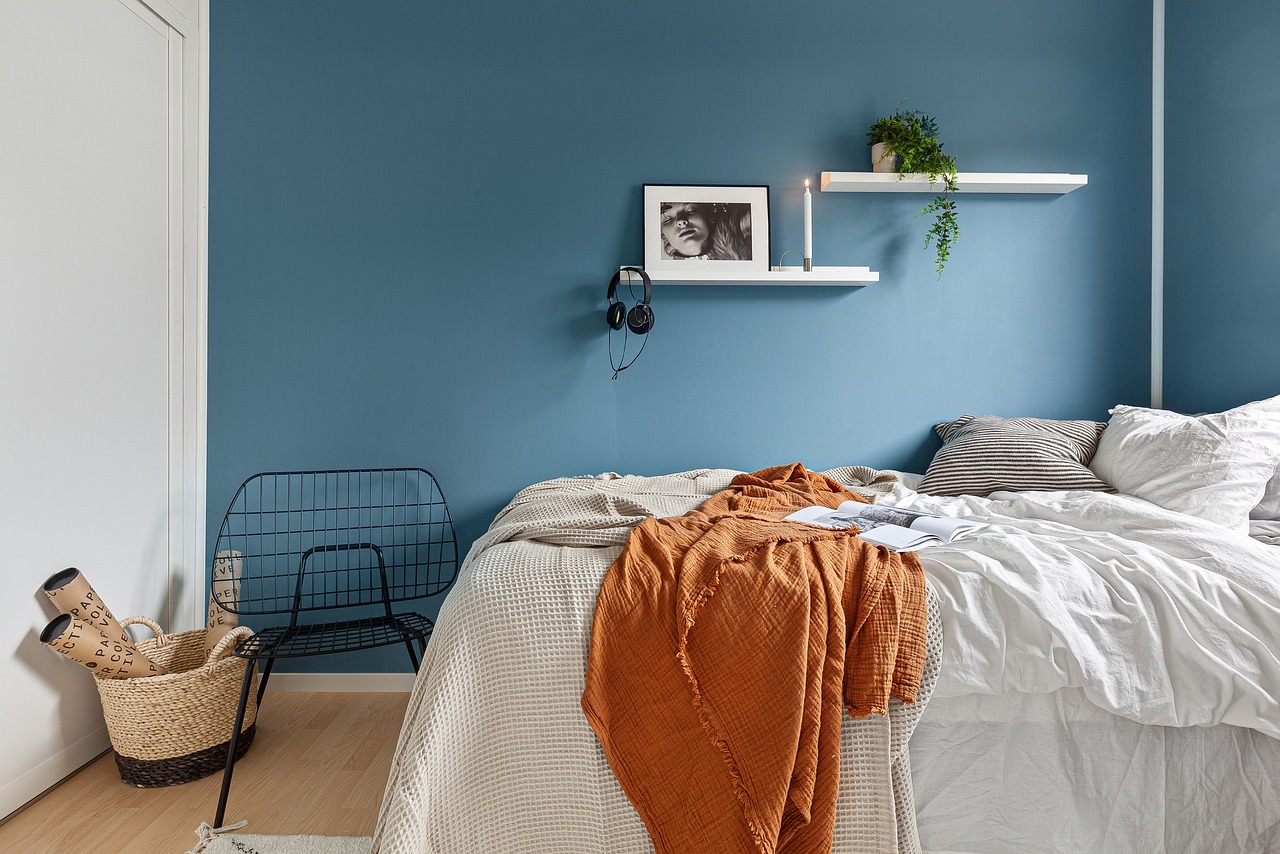
Finishing Techniques
When it comes to achieving that perfect industrial look, can make all the difference. Imagine walking into a room where the wood gleams just right, or the metal has a rugged charm that draws the eye. Finishing isn’t just about aesthetics; it’s about enhancing the natural beauty of the materials you’ve chosen. So, how do you go about it? Let’s dive into some effective methods that will elevate your DIY industrial decor projects!
One of the most popular techniques is staining. This method allows you to enrich the wood’s natural grain while adding a splash of color that can complement your overall theme. Whether you prefer a dark walnut finish or a lighter oak hue, stains can transform a plain piece of wood into a stunning focal point. Be sure to choose a stain that matches the other elements in your space, creating a harmonious look.
Another technique to consider is distressing. This method gives your wood or metal pieces an aged appearance, which is highly sought after in industrial decor. You can achieve this by using sandpaper to wear down edges, or even employing techniques like hammering or using chains to create dings and scratches. The beauty of distressing is that it tells a story; each mark adds character and depth to your decor.
For those who are looking to add a bit of shine, varnishing is your go-to option. A good varnish not only protects the surface but also enhances the color and grain of the wood. There are various types of varnish available, such as matte, satin, or glossy finishes. Each brings a different vibe to your space, so think about what atmosphere you want to create. A satin finish, for example, can offer a subtle sheen that reflects light beautifully without being overpowering.
Don’t forget about paint as a finishing option! While many industrial designs favor the raw look, a pop of color can add personality to your space. Consider using spray paint for metal elements; it adheres well and can create a smooth, even finish. If you’re working with wood, chalk paint can give you that rustic, matte look that fits perfectly within the industrial aesthetic.
Lastly, let’s talk about sealing. After you’ve put in the hard work to finish your pieces, sealing them will help protect against wear and tear. A good sealant will keep your surfaces looking fresh and new for years to come. Whether you choose an oil-based or water-based sealant, make sure to follow the application instructions carefully for the best results.
In summary, the finishing techniques you choose can dramatically impact the overall look and feel of your industrial decor. Whether you opt for staining, distressing, varnishing, painting, or sealing, each method provides an opportunity to express your personal style. So, grab your tools and get ready to transform your space into an industrial masterpiece!
- What is the best type of wood for industrial decor? Reclaimed wood is often favored for its character and sustainability, but other hardwoods like oak and maple can also work well.
- How can I make my metal accents look more industrial? Consider using raw, unfinished metal or applying a patina finish to give your pieces a weathered look.
- Are there specific colors that work best in industrial decor? Neutral tones like grays, browns, and blacks are commonly used, but don’t hesitate to add bold colors as accents!
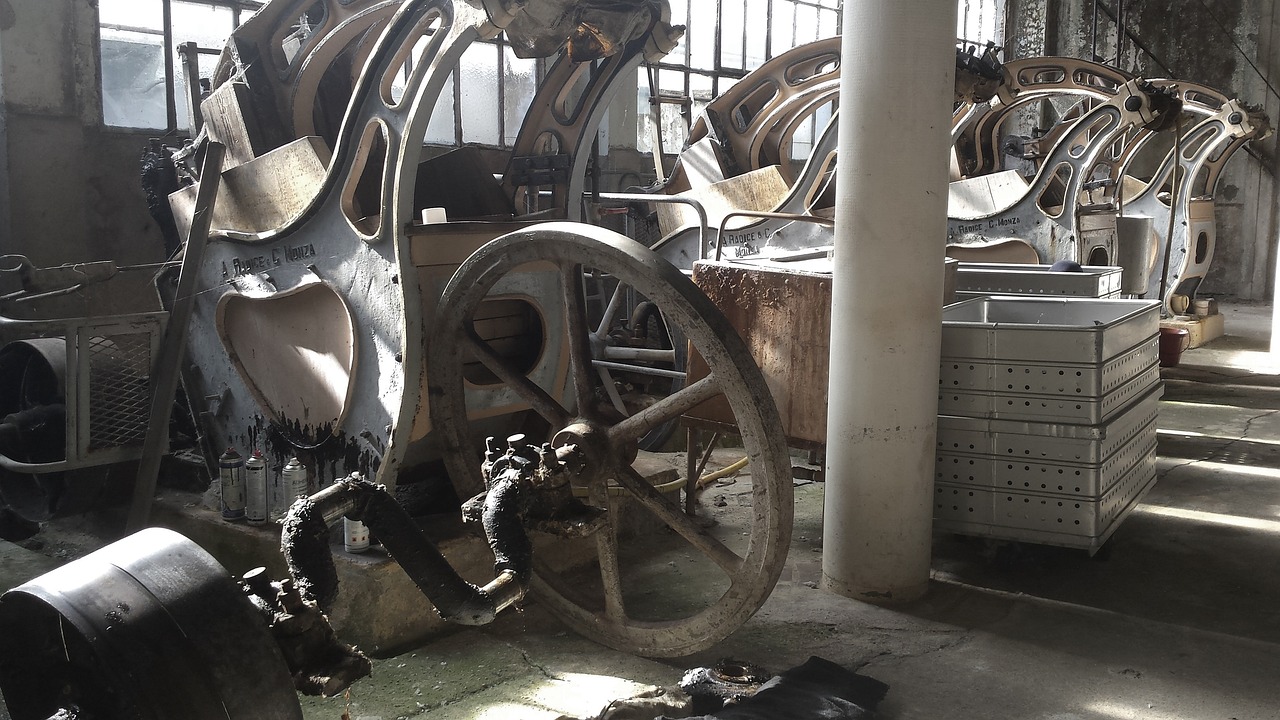
Incorporating Metal Elements
When it comes to achieving that coveted industrial look, incorporating metal elements is absolutely essential. Think of metal as the backbone of your design—strong, versatile, and oh-so-stylish! Whether you’re looking to create a rugged, urban vibe or a sleek, modern aesthetic, metal can help you achieve just that. So, how can you effectively weave metal into your DIY projects? Let’s dive into some practical tips and ideas!
First off, consider the different types of metals you can use. From steel and iron to brass and aluminum, each brings its own unique character to your space. Steel, for instance, is perfect for structural elements like shelving units or frames, while brass can add a touch of warmth and elegance to your decor. Mixing and matching these materials can create a dynamic look that keeps the eye engaged. Just like a well-composed song, the right combination of metals can strike the perfect chord in your home design.
One effective way to incorporate metal is through furniture and fixtures. Think about adding a coffee table with a metal base, or perhaps some metal stools for your kitchen island. Not only do these pieces provide functionality, but they also serve as striking focal points. Imagine walking into your living room and being greeted by a stunning metal-and-wood coffee table that draws everyone’s attention. It's like a conversation starter, right?
Another fantastic way to integrate metal is through accessories. Consider using metal accents in your decor, such as:
- Wall art: Metal sculptures or wall hangings can add depth and texture to your walls.
- Lighting fixtures: Industrial-style pendant lights or floor lamps can illuminate your space while enhancing the aesthetic.
- Decorative trays: Use metal trays to organize and display items on your coffee table or kitchen counter.
Moreover, don’t shy away from using metal finishes. Aged or oxidized metals can bring a sense of history and warmth to your decor, while polished metals can create a sleek, contemporary feel. Think of a beautiful brushed nickel faucet paired with a rustic farmhouse sink—it’s the perfect blend of old and new!
Finally, remember that the placement of your metal elements is key. To achieve a balanced look, try to distribute metal pieces throughout the room. This way, the eye is drawn around the space, creating a harmonious flow. Picture a room where metal accents are thoughtfully placed: a metal clock on one wall, a sleek metal lamp on a side table, and a bold metal sculpture on a shelf. It’s all about creating a cohesive look that feels intentional and stylish.
Incorporating metal elements into your industrial decor can transform your space in ways you never imagined. So, grab those tools and get ready to create a home that’s not just stylish, but also a true reflection of your personality!
Q: What types of metal are best for industrial decor?
A: Steel and iron are popular choices for their durability and strength, while brass and aluminum can add warmth and elegance. Mixing different metals can also create a unique look!
Q: How can I maintain the appearance of metal elements?
A: Regular cleaning with a soft cloth and appropriate cleaners can help maintain the shine of metal elements. For rustic metals, consider using a sealant to prevent rust and oxidation.
Q: Can I mix metal finishes in my decor?
A: Absolutely! Mixing metal finishes can add depth and interest to your design. Just be sure to maintain a cohesive color palette to keep everything looking harmonious.

DIY Industrial Decor Projects
Are you ready to roll up your sleeves and dive into the world of DIY industrial decor? It’s not just about aesthetics; it’s about creating a space that reflects your personality and style. The beauty of industrial decor lies in its raw charm and functional design, making it a perfect choice for anyone looking to add a bit of edge to their home. In this section, we’ll explore some exciting DIY projects that will transform your space into an industrial haven. From shelving units to statement lighting, each project is designed to inspire and empower you to create something truly unique.
First up, let’s talk about industrial shelving units. Imagine having a sturdy, stylish shelf that not only serves a purpose but also acts as a statement piece in your room. Building your own industrial shelving unit is a fantastic way to combine functionality with design. You’ll need materials like metal pipes and wood planks to achieve that classic industrial look. The process is straightforward: start by measuring your space to determine the size of your shelves, then cut your wood to fit. Assemble your metal framework and attach the wood securely. Voila! You have a beautiful, custom shelving unit that showcases your favorite books, plants, or decorative items.
Next, let’s illuminate your space with some unique lighting fixtures. Lighting is crucial in industrial decor, as it sets the mood and highlights your design choices. Why not create a statement piece that doubles as a conversation starter? One popular project involves using Edison bulbs suspended from a simple metal frame. You’ll need a few basic supplies: a light socket, electrical cord, and a metal frame (which you can easily make from scrap materials). Assemble the components, ensuring safety and stability, then hang it in your desired location. The warm glow of Edison bulbs will add a cozy yet industrial vibe to your home.
In addition to these projects, consider integrating metal accents throughout your decor. Metal can be used in various ways, from furniture legs to decorative elements. For example, you might create a coffee table with a wooden top and metal legs or add metal brackets to your shelves for an extra industrial flair. The key is to maintain a cohesive look by combining different metal finishes, such as matte black, brushed nickel, or even rusted metal for a more vintage feel. This attention to detail will elevate your DIY projects and enhance the overall aesthetic of your space.
Finally, let’s not forget about the importance of accessorizing your industrial decor. Once your projects are complete, styling your space is key to achieving that polished industrial look. Consider incorporating elements like vintage suitcases, old books, or even industrial-style clocks to add character. You can also use plants to soften the hard edges of industrial decor, creating a beautiful contrast that brings life into your space. Remember, the goal is to create a balanced environment that feels both inviting and stylish.
Q1: What are the best materials for DIY industrial decor?
A1: The best materials include wood (especially reclaimed wood), metal pipes, and Edison bulbs. These elements capture the essence of industrial design.
Q2: How can I make my industrial decor more inviting?
A2: Incorporate soft textures, such as plush cushions or throws, and add greenery with plants to create a warm and inviting atmosphere.
Q3: Are there any safety tips for DIY projects?
A3: Yes! Always wear protective gear, follow safety guidelines for tools, and ensure your electrical work is done correctly to avoid hazards.

Industrial Shelving Units
Building your own industrial shelving unit is not just a project; it’s an opportunity to express your creativity while enhancing your home’s functionality. Imagine walking into a room and being greeted by a stunning display of raw wood and metal, perfectly blending style and practicality. The beauty of industrial shelving lies in its versatility—whether you want to showcase your favorite books, display plants, or organize kitchen essentials, these units can do it all!
To kickstart your project, you’ll need a few essential materials. Think of sturdy wood planks for the shelves and metal pipes or brackets for the supports. The combination of these materials not only provides strength but also captures that raw, unfinished look characteristic of industrial decor. When selecting wood, consider using reclaimed wood for an eco-friendly touch that adds history and character to your shelves. If you're feeling adventurous, you might even mix different types of wood for a more eclectic look!
Here’s a simple breakdown of the steps involved in creating your own industrial shelving unit:
- Design Your Unit: Sketch out your design. How many shelves do you want? What dimensions will fit your space? Planning is crucial!
- Gather Materials: Purchase your wood and metal components. Don’t forget screws, brackets, and any finishing products you might need.
- Assemble the Frame: Start by constructing the frame using the metal pipes. Ensure everything is level and secure.
- Add the Shelves: Once the frame is ready, attach your wood shelves. You can use brackets for added support or simply rest the shelves on the frame.
- Finish It Off: Sand down any rough edges and apply a wood finish to enhance the beauty of the wood.
One of the best parts about DIY industrial shelving units is the ability to customize them to fit your style. You can choose a rustic finish for a more farmhouse feel or go for a sleek, polished look that screams modern sophistication. Plus, these shelves can be designed to fit any corner of your home, whether it’s a spacious living room or a cozy nook in your kitchen.
Don’t forget to consider how you’ll style your new shelves once they’re built. Incorporating a mix of books, decorative items, and plants can create an inviting atmosphere. Think of your shelving unit as a blank canvas—what story do you want it to tell? By curating the items you display, you can make your industrial shelving unit not just a functional piece of furniture, but a statement of your personal style.
In summary, creating an industrial shelving unit is a rewarding project that combines creativity with practicality. With the right materials, a bit of planning, and a splash of imagination, you can transform your space and make a bold statement that reflects your unique taste.
Q: What tools do I need to build an industrial shelving unit?
A: You’ll typically need a drill, saw, measuring tape, level, and sandpaper. If you’re using metal pipes, a pipe cutter can also be handy.
Q: Can I use other materials besides wood and metal?
A: Absolutely! While wood and metal are the classic choices for industrial decor, you can also incorporate glass or even concrete for a unique twist.
Q: How do I maintain my industrial shelving unit?
A: Regular dusting and occasional polishing of the wood can keep your shelves looking fresh. If you’ve used reclaimed wood, be mindful of any splinters or rough edges.

Creating Statement Lighting
When it comes to industrial decor, lighting is not just about illuminating a space; it’s about making a statement. Imagine walking into a room where the lights themselves are conversation starters. That's the magic of statement lighting in an industrial-themed home. From exposed bulbs to unique fixtures, the right lighting can transform an ordinary room into an extraordinary one.
To kick off your journey in creating statement lighting, think about the materials that resonate with the industrial aesthetic. Metal, glass, and wood are your best friends here. For instance, using metal cages around light bulbs can give a raw, unfinished look that perfectly complements the industrial vibe. You might also consider incorporating pipe fittings to create a vintage-style pendant light. These materials not only enhance the visual appeal but also add a layer of authenticity to your decor.
Here’s a simple guide to creating your own statement lighting fixture:
- Choose Your Base: Start with a sturdy base, like a wooden board or a metal plate. This will be the foundation of your light fixture.
- Pick Your Bulbs: Opt for Edison bulbs for that classic industrial look. Their warm glow adds a cozy atmosphere to any space.
- Decide on the Design: Whether you want a cluster of lights hanging from the ceiling or a single dramatic pendant, sketch out your design before you start.
- Gather Your Materials: You’ll need wiring, sockets, and your chosen materials (like pipes or wood) to build the structure.
- Assemble: Follow your design, ensuring all electrical components are safely connected. If you're unsure, consult a professional to help with the wiring.
Once your lighting fixture is assembled, hang it in a prominent spot where it can shine—literally and figuratively! A well-placed light can draw the eye and serve as a focal point in your room. Think about positioning it over a dining table, in a cozy reading nook, or even as a statement piece in an entryway.
Moreover, don’t underestimate the power of layering your lighting. Combine your statement piece with other light sources, like floor lamps or wall sconces, to create depth and ambiance. This layering can enhance the overall industrial feel and make your space feel more inviting.
Incorporating statement lighting into your home isn’t just about aesthetics; it’s also about functionality. Ensure that your lighting serves its purpose. A well-lit room can improve mood, productivity, and even safety. When designing your fixture, consider the brightness and adjust the number of bulbs or their wattage accordingly.
In conclusion, creating statement lighting is a fantastic way to showcase your personality while embracing the industrial style. With a little creativity and some hands-on work, you can craft unique fixtures that not only light up your home but also reflect your individual taste. So, roll up your sleeves, gather your materials, and let your imagination run wild!
1. What materials are best for industrial lighting?
The best materials for industrial lighting include metal, wood, and glass. These materials contribute to the raw and unfinished look characteristic of industrial decor.
2. Can I use LED bulbs in industrial fixtures?
Absolutely! LED bulbs are energy-efficient and come in various styles, including vintage designs that suit the industrial aesthetic perfectly.
3. How can I ensure my lighting is safe?
Always follow proper electrical guidelines when assembling your lighting. If you're unsure, it's wise to consult a licensed electrician to ensure everything is safely connected.
4. Where should I hang my statement lighting?
Consider hanging your statement lighting in high-traffic areas like dining rooms, living rooms, or entryways where it can serve as a focal point and conversation starter.
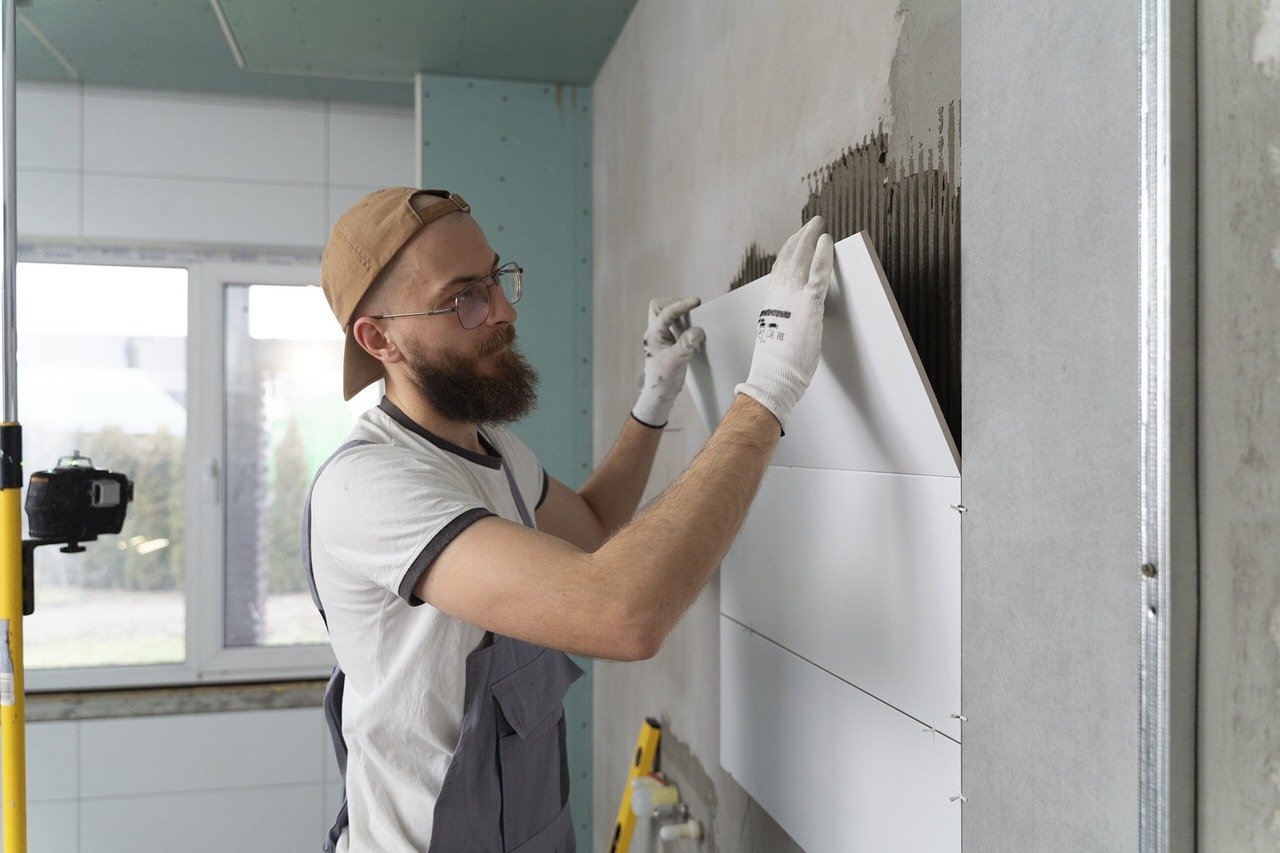
Styling Tips for Industrial Spaces
Once you've rolled up your sleeves and completed your DIY industrial decor projects, the next exciting step is styling your space. It's like the icing on the cake! You want your home to reflect that raw yet refined vibe that industrial decor is known for. So, how do you achieve that perfect balance? Let's dive in!
First off, consider the color palette. Industrial spaces often thrive on muted tones—think grays, blacks, and browns. But don't shy away from adding a splash of color! A bold piece of artwork or a vibrant throw pillow can create a stunning contrast against the backdrop of your industrial elements. The key is to keep it minimalistic; too many colors can overwhelm the space. Remember, less is more!
Next, think about furniture arrangement. In industrial design, open spaces are your best friend. Avoid cluttering your rooms with oversized furniture. Instead, choose sleek, functional pieces that complement the industrial aesthetic. For instance, a reclaimed wood coffee table paired with metal chairs can create a striking focal point. Position your furniture to encourage conversation and flow. Think of your space as a dance floor—everyone should have room to move!
Another crucial aspect is layering. This involves mixing textures and materials to add depth to your space. Consider combining soft fabrics with hard surfaces. A plush velvet sofa can sit beautifully alongside a metal side table. You can also introduce natural elements like plants to soften the industrial look. Plants not only purify the air but also bring a sense of life to your decor. Imagine a tall, leafy plant in a concrete pot—it’s the perfect harmony of nature and industry!
Don't forget about lighting, which is essential in any industrial space. Think about incorporating vintage-style light fixtures, such as Edison bulbs, to create a warm ambiance. You can hang pendant lights over a dining area or use floor lamps to highlight specific corners. Lighting can dramatically change the mood of a room, so play around with different styles and placements until you find what feels right.
Finally, accessorizing is where you can truly express your personality. Use industrial-inspired decor items like metal sculptures, vintage clocks, or even old factory tools as wall art. These unique pieces tell a story and add character to your space. You can also incorporate books, candles, and other personal items on your shelves to make the space feel lived-in and inviting. Just remember to keep it cohesive; choose accessories that match your overall theme.
In summary, styling your industrial space is about creating a cohesive look that reflects your personal style while embracing the raw beauty of industrial design. By focusing on color, furniture arrangement, layering, lighting, and accessorizing, you'll transform your home into a stunning industrial haven that you can be proud of.
- What are the best colors for industrial decor? The best colors include muted tones like grays, blacks, and browns, with the option to add pops of color for contrast.
- How can I incorporate plants into my industrial decor? Use plants in concrete or metal pots to add a natural element that complements the industrial aesthetic.
- What type of lighting is best for an industrial space? Vintage-style fixtures, especially those with Edison bulbs, work wonderfully to create a warm and inviting atmosphere.
- Can I mix different styles with industrial decor? Absolutely! Mixing styles can create a unique look, just ensure that the elements complement each other.
Frequently Asked Questions
- What is industrial decor?
Industrial decor is a design style that emphasizes raw materials and a minimalist aesthetic. It often incorporates elements like exposed brick, metal fixtures, and reclaimed wood, creating a rugged yet stylish atmosphere in your home.
- How can I start incorporating industrial decor into my home?
Begin by identifying key elements that define industrial decor, such as metal accents and wooden furniture. You can start small with DIY projects like shelving units or lighting fixtures to gradually transform your space.
- What materials do I need for DIY industrial decor projects?
Essential materials include various types of wood (especially reclaimed wood), metal pipes, old crates, and even concrete. These materials not only fit the industrial aesthetic but are also often budget-friendly.
- Is reclaimed wood a good choice for industrial decor?
Absolutely! Reclaimed wood adds character and a sense of history to your decor. Plus, it's an eco-friendly option that can elevate the overall look of your projects while being sustainable.
- What are some easy DIY industrial decor projects I can try?
Some beginner-friendly projects include creating industrial shelving units, crafting unique lighting fixtures, or even repurposing old furniture with a fresh industrial twist. Each project can be tailored to fit your style and budget!
- How can I style my space after completing my industrial decor projects?
Once your projects are done, focus on arranging your furniture and accessories to create balance. Use a mix of textures, such as soft fabrics with hard metals, and don't shy away from incorporating vintage pieces to enhance the industrial vibe.
- Are there any tips for choosing the right wood for industrial projects?
When selecting wood, consider its durability and appearance. Hardwoods like oak or walnut work well for furniture, while softer woods can be great for decorative elements. Always think about how the wood will complement your overall decor.
- What lighting options work best in an industrial-themed space?
Look for lighting fixtures that feature metal finishes, Edison bulbs, or even vintage designs. Pendant lights and floor lamps made from materials like iron or brass can serve as stunning focal points in your industrial decor.



















